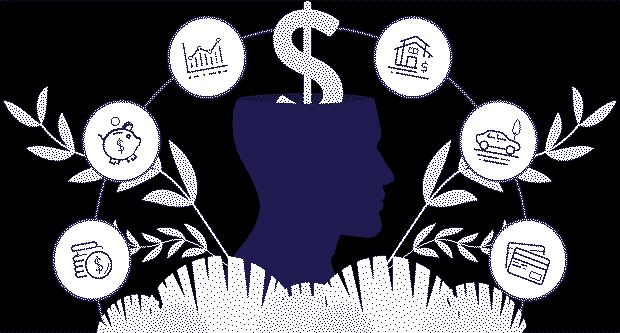Question: Can you explain the concept of Sustainable Finance along with principles, benefits and challenges from the perspective of investing in greener future?
Sustainable finance is rapidly becoming a cornerstone of modern investment strategies, aligning financial growth with the need for environmental protection, social equity, and strong governance. As the world faces pressing challenges like climate change, resource depletion, and social inequalities, sustainable finance offers a pathway to invest in a greener and more equitable future. This article explores the principles of sustainable finance, the importance of ESG (Environmental, Social, and Governance) criteria, and the benefits of incorporating these factors into investment decisions.
Understanding Sustainable Finance
Sustainable finance refers to the integration of environmental, social, and governance (ESG) factors into financial decision-making. It goes beyond traditional financial analysis by considering the long-term impact of investments on the environment, society, and corporate governance. The goal is to create value not only for investors but also for society and the planet.
Sustainable finance encompasses a wide range of financial activities, including investing in green bonds, renewable energy projects, and socially responsible companies. It also includes divesting from industries that are harmful to the environment or society, such as fossil fuels or tobacco. By directing capital towards sustainable initiatives, investors can help drive positive change and support the transition to a low-carbon, inclusive economy.
The Principles of Sustainable Finance
The principles of sustainable finance are rooted in the consideration of ESG criteria, which are used to evaluate the sustainability and ethical impact of an investment. These principles guide investors in making decisions that align with their values and contribute to the broader goal of sustainable development.
1. Environmental (E)
The environmental aspect of ESG focuses on how a company’s operations impact the planet. This includes factors like carbon emissions, energy efficiency, waste management, water usage, and the preservation of biodiversity. Investors consider how companies are addressing these issues and whether they are contributing to or mitigating environmental risks. Investments in renewable energy, clean technology, and sustainable agriculture are examples of how the environmental principle is applied in sustainable finance.
2. Social (S)
The social component of ESG examines how a company manages its relationships with employees, customers, suppliers, and the communities in which it operates. This includes labor practices, human rights, health and safety, diversity and inclusion, and community engagement. Investors assess whether companies are acting responsibly and contributing to social well-being. Investing in companies with strong social practices, such as those that prioritize fair labor standards or support local communities, is a key aspect of sustainable finance.
3. Governance (G)
Governance refers to the internal systems, practices, and policies that a company uses to govern itself and make decisions. This includes issues like board diversity, executive compensation, transparency, shareholder rights, and ethical business practices. Strong governance ensures that companies are managed in a way that is accountable and aligned with the interests of all stakeholders, including investors. Sustainable finance promotes investments in companies with robust governance structures that ensure long-term sustainability and ethical behavior.
The Benefits of Sustainable Finance
The integration of ESG criteria into investment decisions offers numerous benefits for both investors and society as a whole. These benefits highlight why sustainable finance is not just a trend, but a crucial component of responsible investing.
1. Risk Management
One of the primary benefits of sustainable finance is improved risk management. By considering ESG factors, investors can identify and mitigate potential risks that may not be apparent through traditional financial analysis alone. For example, companies with poor environmental practices may face regulatory fines, reputational damage, or increased costs due to climate-related events. Similarly, companies with weak governance may be more susceptible to fraud or corruption, leading to financial losses. By integrating ESG criteria, investors can better understand and manage these risks, leading to more stable and resilient portfolios.
2. Long-Term Value Creation
Sustainable finance focuses on long-term value creation rather than short-term gains. Companies that prioritize ESG factors are often better positioned to thrive in the long run because they are more likely to adapt to changing regulations, consumer preferences, and market conditions. For example, companies that invest in energy efficiency or renewable energy are better prepared for a future where carbon emissions are increasingly regulated and costly. Similarly, companies with strong social and governance practices are more likely to attract and retain top talent, maintain customer loyalty, and avoid legal or ethical scandals. By investing in such companies, investors can achieve sustainable financial returns while contributing to positive social and environmental outcomes.
3. Positive Impact on Society and the Environment
Perhaps the most compelling benefit of sustainable finance is its potential to drive positive change in society and the environment. By directing capital towards sustainable initiatives, investors can support the transition to a low-carbon economy, promote social equity, and encourage responsible business practices. For example, investing in green bonds can help finance renewable energy projects that reduce greenhouse gas emissions and combat climate change. Similarly, investing in companies with strong social practices can promote fair labor standards and improve working conditions for employees. Through sustainable finance, investors can contribute to the achievement of the United Nations’ Sustainable Development Goals (SDGs) and help create a more just and sustainable world.
4. Attracting Investors and Customers
Companies that embrace sustainable practices often attract more investors and customers. There is a growing demand among investors, particularly millennials and institutional investors, for investments that align with their values and contribute to positive social and environmental outcomes. Companies that demonstrate a commitment to sustainability are more likely to attract these investors, leading to increased capital flows and stock performance. Similarly, consumers are increasingly favoring companies that prioritize sustainability, leading to increased sales and brand loyalty. By embracing sustainable finance, companies can enhance their reputation, build trust with stakeholders, and gain a competitive advantage in the market.
The Role of Regulatory Frameworks and Standards
The growth of sustainable finance has been supported by the development of regulatory frameworks and standards that provide guidance for investors and companies. These frameworks help ensure that ESG criteria are consistently and transparently applied, enabling investors to make informed decisions and compare the sustainability performance of different investments.
1. Global Standards and Initiatives
Several global initiatives have been launched to promote sustainable finance and standardize ESG reporting. For example, the United Nations-supported Principles for Responsible Investment (PRI) is a global network of investors committed to integrating ESG factors into their investment decisions. Similarly, the Task Force on Climate-related Financial Disclosures (TCFD) provides recommendations for companies to disclose climate-related risks and opportunities in their financial reports. These initiatives help create a common language and set of practices for sustainable finance, making it easier for investors to assess the sustainability of their investments.
2. Regulatory Developments
Governments and regulatory bodies around the world are increasingly recognizing the importance of sustainable finance and are implementing policies to support its growth. For example, the European Union’s Sustainable Finance Disclosure Regulation (SFDR) requires financial market participants to disclose how they integrate ESG factors into their investment decisions. Similarly, the EU Taxonomy for Sustainable Activities provides a classification system to help investors identify environmentally sustainable economic activities. These regulatory developments provide clarity and accountability, ensuring that sustainable finance is not just a marketing tool but a genuine effort to promote sustainability.
Challenges and Opportunities in Sustainable Finance
While sustainable finance offers numerous benefits, it also faces challenges that need to be addressed to fully realize its potential.
1. Data Availability and Quality
One of the main challenges in sustainable finance is the availability and quality of ESG data. Unlike financial data, which is standardized and readily available, ESG data can be inconsistent, incomplete, or difficult to compare across companies and industries. This makes it challenging for investors to accurately assess the sustainability performance of their investments. To address this issue, there is a growing demand for standardized ESG reporting and third-party verification to ensure the reliability and comparability of ESG data.
2. Greenwashing
Greenwashing, or the practice of making misleading claims about the sustainability of a product or investment, is another challenge in sustainable finance. As demand for sustainable investments grows, some companies and financial institutions may exaggerate their ESG credentials to attract investors. This can undermine the credibility of sustainable finance and make it difficult for investors to identify genuine sustainable investments. To combat greenwashing, regulators and industry bodies are developing stricter guidelines and standards for ESG reporting and marketing.
3. Balancing Financial Returns with Sustainability Goals
Investors may face challenges in balancing financial returns with sustainability goals. While sustainable investments can offer competitive returns, there may be instances where prioritizing ESG factors leads to trade-offs in financial performance. For example, divesting from high-carbon industries may result in lower short-term returns, even though it aligns with long-term sustainability goals. To address this challenge, investors need to carefully consider their investment objectives, risk tolerance, and time horizon when integrating ESG factors into their decisions.
Conclusion: The Future of Sustainable Finance
Sustainable finance is more than just a trend; it is a critical component of the global effort to create a greener and more equitable future. By integrating ESG factors into investment decisions, investors can manage risks, create long-term value, and contribute to positive social and environmental outcomes. As regulatory frameworks and standards continue to evolve, and as data quality improves, sustainable finance will become increasingly mainstream, driving the transition to a sustainable economy.
Investing in a greener future through sustainable finance is not only a moral imperative but also a smart financial strategy. As more investors recognize the benefits of sustainable finance, the flow of capital towards sustainable initiatives will continue to grow, supporting the achievement of global sustainability goals and ensuring a better future for generations to come.



